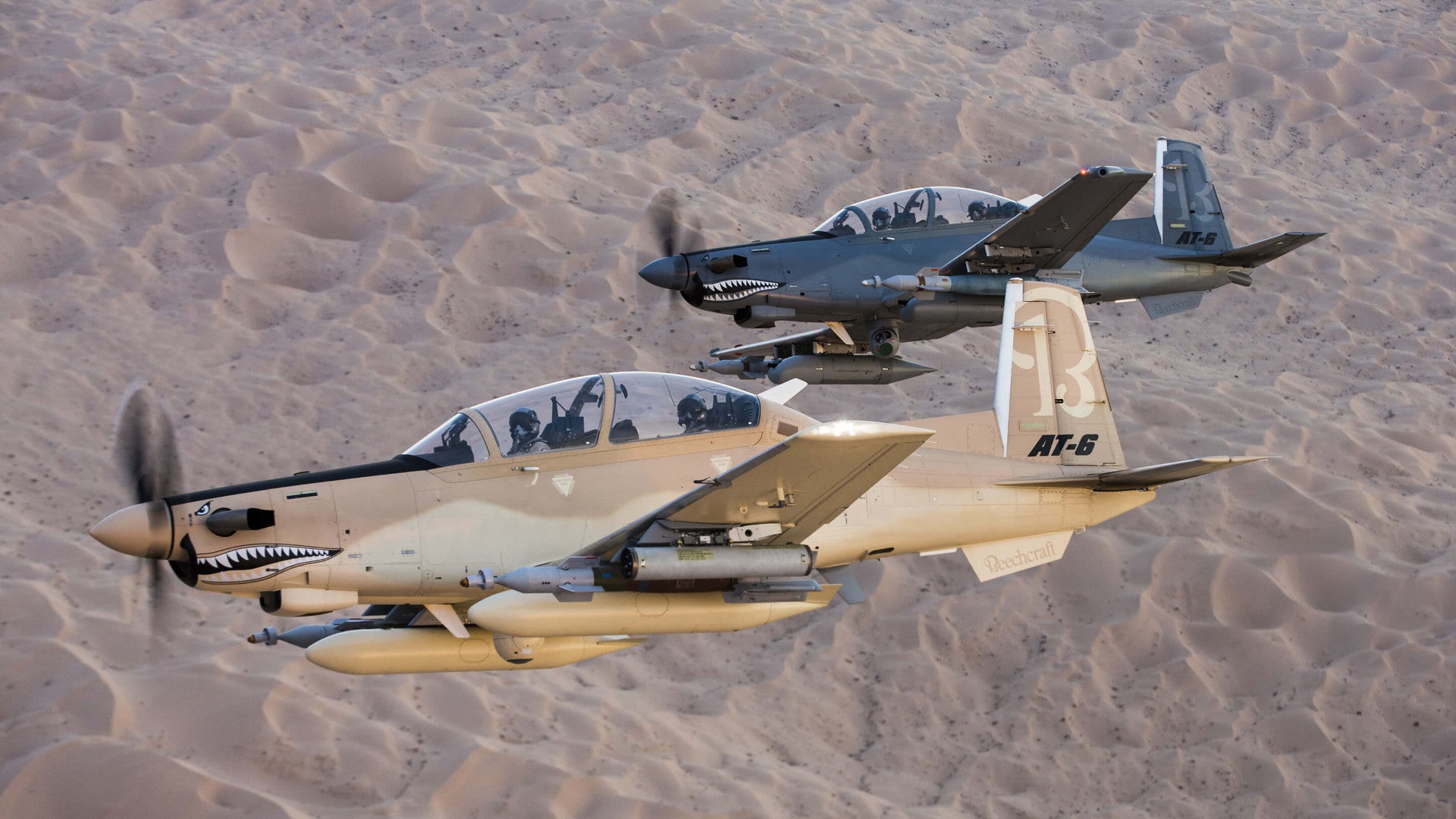At least three different aircraft will participant in the U.S. Air Force’s light attack experiment, commonly referred to as OA-X, according to the companies involved. All that remains to be seen is just how serious the service actually is about pursuing the concept.
On May 12, 2017, Sierra Nevada Corporation (SNC) issued a press release on behalf of itself and its partner, Embraer Defense & Security, announcing that they would be sending their A-29 light attack aircraft to the Air Force’s evaluation. On May 15, 2017, Textron Aviation sent out a notice that its AT-6 Wolverine and Scorpion aircraft were slated to take part in the tests. The project would begin in July 2017 at Holloman Air Force Base in New Mexico.
OA-X may turn out to be “a more sustainable model for the future that would be less costly [and] that I could entice foreign partners and allies and coalition members to partner with us on,” U.S. Air Force Chief of Staff General David Goldfein explained during a talk at the American Enterprise Institute in Jan. 18, 2017. He added that a proposal by Senator John McCain (R-AZ) earlier than
month to buy 300 such aircraft was a “great idea.”
After McCain released his white paper and Goldfein made his comments, The War Zone’s own Tyler Rogoway wrote an in-depth analysis of the possible competitors and the potential future of such a program. At that time, the A-29 and the Scorpion seemed like the most likely contenders. The final decision is hardly surprising given that Boeing and Lockheed Martin both said they were unlikely to participate in the experiment. The decision by the smaller company IOMAX not to compete was also notable, but more on that later on.
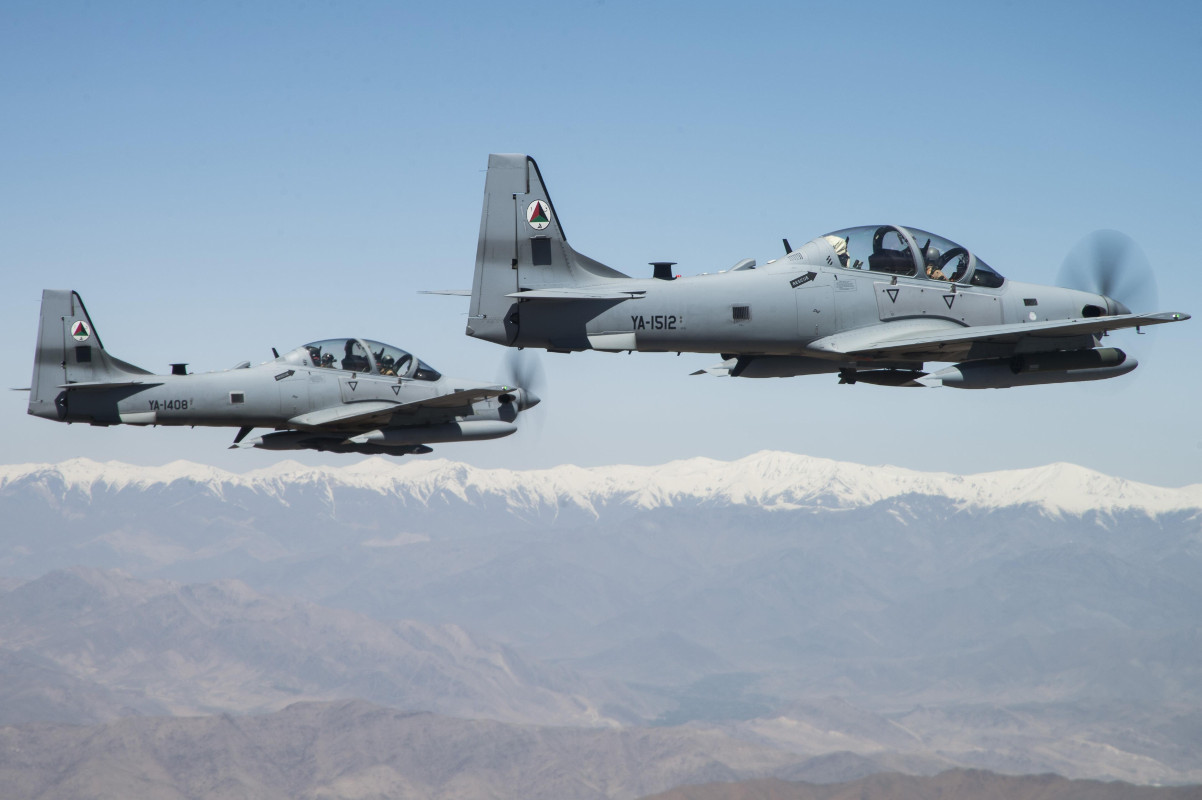
As it stands now, Air Force testers at Holloman will be pitting two relatively similar and proven aircraft against each other, while evaluating another, totally new aircraft. The A-29, a variant of Brazilian plane maker Embraer’s EMB 314 Super Tucano, and the AT-6 Wolverine, a version of the Beechcraft T-6 Texan II trainer, are both low-wing, two-place monoplanes with roughly similar dimensions. A single Pratt & Whitney Canada PT6A turboprop, the industry standard engine for light aircraft in this class, powers both aircraft to similar cruising speeds of around 320 miles per hour without any weapons or equipment.
At just over 37 feet long and with a wingspan of 36.5 feet, the A-29 is approximately four feet longer and two feet broader than the AT-6. The Brazilian design is also 1,000 pounds heavier. The A-29 can carry missiles, bombs, rockets, gun pods, and other ordnance on five pylons, two in each wing and another under the fuselage centerline. In addition, the aircraft has a .50 caliber machine gun built into each wing. The Wolverine has six under-wing pylons, but no fixed guns. Both planes can carry a sensor turret with day- and night-vision cameras and a laser designator, along with defensive flares.
The inclusion of both types in the OA-X tests makes perfect sense. The Air Force already has a large fleet of T-6A Texan II trainers, which share many of the same components. This means that a not insignificant portion of the service’s logistics pipeline could support units with an attack variant. Certain training and maintenance expertise would translate to the new planes, too. And since 2013, the Air Force has been buying A-29s for foreign partners and training pilots from those countries to fly them.
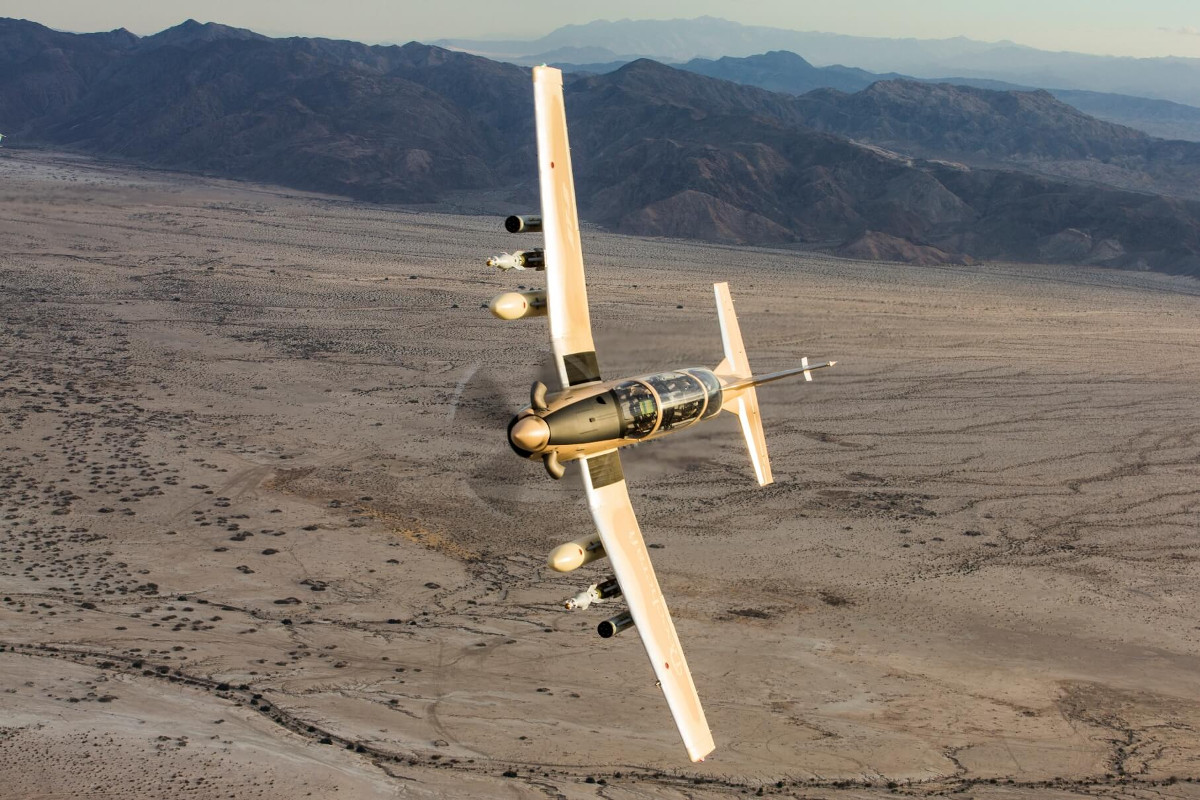
The similarities between the two aircraft have already brought them into close competition in the past. Between 2010 and 2012, Beechcraft – now part of Textron – and the SNC-Embraer team, along with the political supporters in Congress, fought over a series of disputed contracts to supply aircraft to both the U.S. Air Force and Afghanistan’s air arm.
Despite significant “buy American”-based lobbying on behalf of Beechcraft, the SNC-Embraer offering won out to build what became the A-29. Through the Foreign Military Sales program, the Pentagon has delivered a number of the light attack aircraft to Afghanistan and is working to send more to Lebanon. The U.S. Air Force canceled its parallel project in 2012, nominally due to budget cuts, but in no small part because of institutional reticence bordering on outright sabotage.
“SNC and Embraer will take part in the experiment with the A-29 Super Tucano, which is the only light air support (LAS) aircraft in the world with a USAF Military Type Certificate,” the companies boasted in their press release. “Partnering with Embraer, we’re proud to present the U.S.-made, combat-proven A-29 as part of this experiment,” Taco Gilbert, SNC’s senior vice president for SNC´s Intelligence Surveillance Reconnaissance division, added, clearly trying to get in front of any renewed objections to the aircraft’s Brazilian connection.
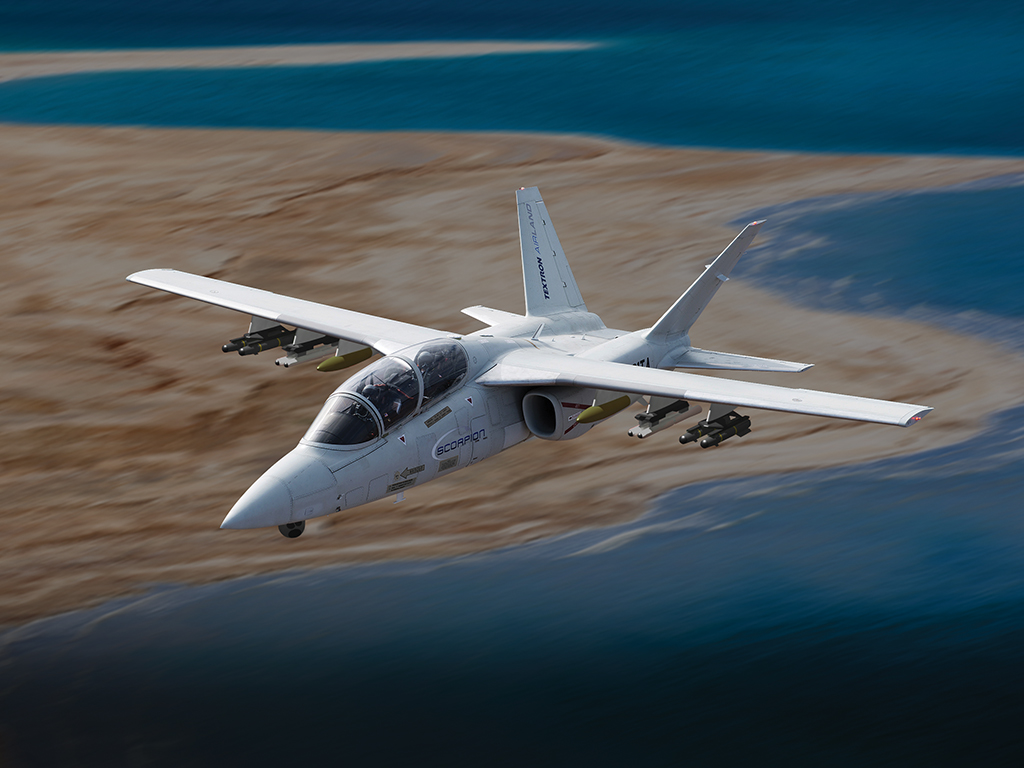
It’s this experience that may help explain Textron’s seemingly odd choice to submit two radically different aircraft. The Scorpion is significantly different beast from either of the turboprop entrants, being a two-seat, high-wing jet. Two Honeywell TFE731 turbofans, each generating 4,000 pounds of thrust, gives the aircraft a maximum speed of over 500 miles per hour.
With an empty weight of more than 12,000 pounds and with a wingspan of more than 47 feet, it is significantly larger than either the A-29 or the AT-6 and can carry a variety of weapons on six under-wing stores stations. More importantly, it has a retractable mount in the nose for a sensor turret, as well as an internal payload bay for additional mission systems in the center of the fuselage. This could include more sensors, advanced defensive gear, or other equipment.

According to Textron, the privately-funded design features a low-maintenance composite airframe and modular, plug-and-play avionics that can be upgraded and updated with relative ease. In August 2016, the Air Force already agreed to test the aircraft’s airworthiness in a first-of-its-kind arrangement, which the Rhode Island-headquartered defense contractor hoped would encourage foreign sales. After that, it was undoubtedly an easy decision for the service to include the plane in the OA-X trials.
“This is an exciting step forward for these programs, and we are confident the Scorpion and AT-6 are exceptional platforms to fulfill the USAF’s light attack mission,” Textron said in its statement. “Both platforms offer advanced mission systems technology, affordability and adaptability. Designed, sourced and built in the United States, the Scorpion and AT-6 also offer a strong, positive economic impact aligned with the goals of the current administration.”
Noticeably absent is IOMAX’s Archangel or another aircraft in the rapidly expanding category of light attack and surveillance aircraft based on agricultural aircraft. A idea dating back to the 1980s, the North Carolina-based firm has become one of, if not the preeminent company building such aircraft. It has already sold armed aircraft to a number of countries, including Jordan and the United Arab Emirates.
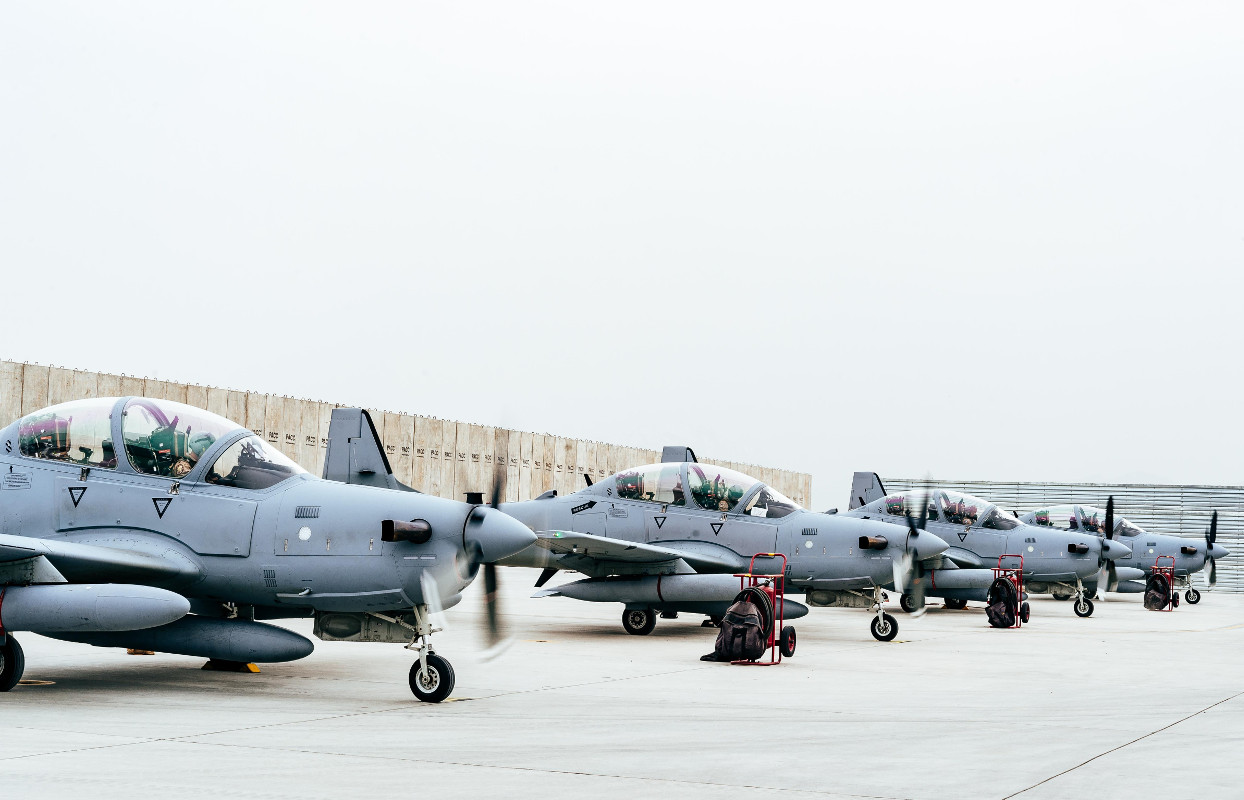
However, unfortunately, IOMAX is currently in the midst of a dispute with the Air Force over a separate deal to sell this type of aircraft to Kenya. The company and its supporters in Congress argue that the service steered the military aid contract to a preferred contractor, L-3, which has limited experience with converted agricultural aircraft and no history of building armed versions, without even considering any competitors.
“They were given a raw deal,” representative Ted Budd (R-NC) told Fox News in March 2017. “We want to know why IOMAX was not considered.”
But regardless of the participants, it’s still not clear how far the Air Force intends to proceed with OA-X in general. In 2008, a team within Air Combat Command published what became known as the OA-X Enabling Concept, a white paper that outlined the basic parameters for the aircraft in question. The next year, the command, which flies the vast majority of the Air Force’s combat aircraft, proposed a plan to buy four squadrons – at least 176 aircraft, but as many as 204 – for approximately $4.2 billion over the next six fiscal years.
The service dutifully budgeted for what it called the Light Attack / Armed Reconnaissance (LAAR) project, as well as, the parallel Light Air Support (LAS) program for Afghanistan. As already noted, the service simply could not decide how to proceed or even if it wanted to do so, despite contract awards and available funding. Contract disputes and budget cuts known as sequestration were simply the final blows to what already appeared to be a doomed project. The Air Force ultimately dropped out of a partnership with U.S. Special Operations Command and the U.S. Navy on a related effort, known as Combat Dragon II.

On the surface, with statements like those from General Goldfien earlier in 2017, the revived OA-X seems to have significantly more institutional support than it did in the past. The big question is whether that extends beyond simple experimentation.
“We don’t think [an experiment] would cost a lot of money, and it’s designed just to help us get our arms around [questions like]: What can you actually do? Does it actually contribute? Can it survive in different threat environments?” Lt. Gen. James M. “Mike” Holmes, the Air Force’s deputy chief of staff for strategic plans and requirements, told Defense News in September 2016.
The OA-X experiment will hardly be the first time the Air Force has flirted with a light attack aircraft for conflicts involving enemies with limited air defenses. If one counts both the Cessna A-37 Dragonfly and the A-29 program, the service has gone on to buy significant numbers of the resulting aircraft on exactly two occasions – and only once for itself. And its controversial history with the significantly heavier A-10 Warthog ground attack plane doesn’t necessarily inspire confidence, either. Some immediately worried the new iteration of OA-X was simply a veiled ploy to ditch those blunt-nose attackers for good.
There’s always the possibility more companies will get invites, too. So, you can be sure we at The War Zone will be closely watching the OA-X trials to see what, if anything comes of them.
Contact the author: joe@thedrive.com
